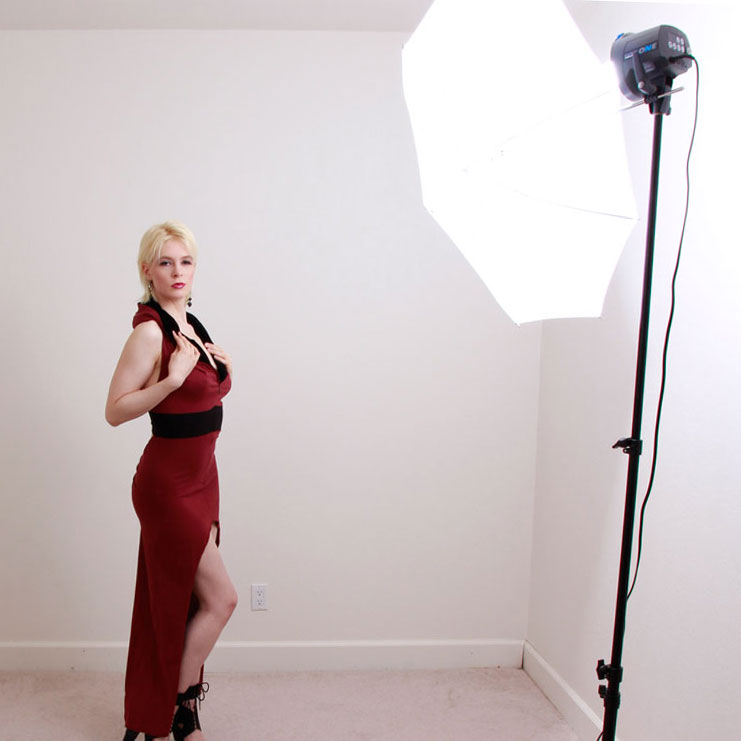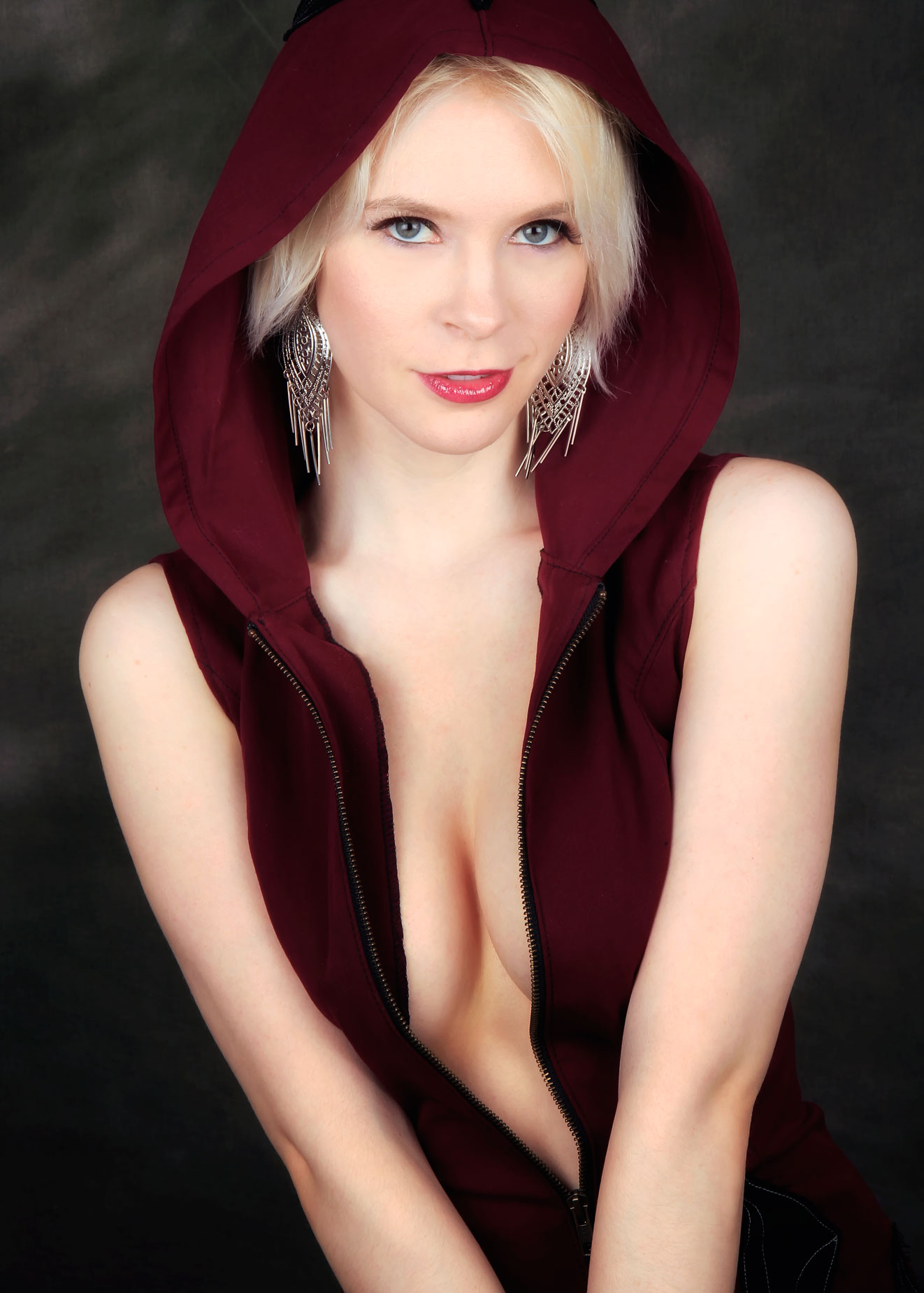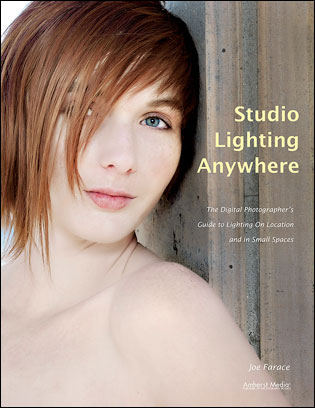It’s #anythingcanhappenday today. You may have recently noticed that I’ve increased the number or glamour and portrait-related posts. This is a genre I’m passionate about and the previous four books I wrote were about this subject. I strive to keep a balance of topics on this blog and Anything Can Happen Day seems to be a perfect place to talk about my passion and how I ,.ike to work in my home studio.
Today’s Post by Joe Farace
A portrait is not made in the camera but on either side of it,”— Edward Weston
 While I ponder the existential nature of Mr Weston‘s quote, I think about what Oscar Wilde had to say about this subject—“Every portrait that is painted with feeling is a portrait of the artist, not of the sitter.” (There’s more on this subject tomorrow, if you would like to see a deeper dive.) Personally, I wonder what the below portrait says about me other than I always try to make the nicest possible portrait of a subject, which is really what I think about during these sessions.
While I ponder the existential nature of Mr Weston‘s quote, I think about what Oscar Wilde had to say about this subject—“Every portrait that is painted with feeling is a portrait of the artist, not of the sitter.” (There’s more on this subject tomorrow, if you would like to see a deeper dive.) Personally, I wonder what the below portrait says about me other than I always try to make the nicest possible portrait of a subject, which is really what I think about during these sessions.
Maybe I’m wrong because knowingly or unknowingly I put my own dare-I-call-it special imprint on every portrait that I make. Part of my process is that I keep in my head a list of the kinds of images I would like to make. This originates from my fascination with the work of J. Frederick Smith, an artist turned photographer whose ground breaking work in the glamour photograph genre seems to have been lost in time. Poke around on eBay and you might find a copy of his book in the
Not Just for Rainy Days
 My fascination with lighting portraits with umbrellas goes back to George Larson’s Reflectasol, a combination umbrella and reflector I used early in my career. Later I became infatuated with large parabolic umbrellas and for a time worked with a Booth Photo to create a series of these kinds of umbrellas for them.
My fascination with lighting portraits with umbrellas goes back to George Larson’s Reflectasol, a combination umbrella and reflector I used early in my career. Later I became infatuated with large parabolic umbrellas and for a time worked with a Booth Photo to create a series of these kinds of umbrellas for them.
A photographic umbrella looks and acts much like a rain umbrella, except they can be covered in reflective material so that when they’re used with a light source bounced into them, it creates a big, soft light source. With Parabolics, they can really be BIG. You can also shoot through translucent umbrellas as I did with the featured image (above right) to create a direct, brighter yet soft light source. Umbrellas are passive devices and don’t care what kind of light you bounce into or shoot through them, whether it’s a monolight, flash head, speedlight or a even a continuous light source like LED.
How I made this Portrait: Talking about idea rattling around in my head…One concept that always gets my attention is a modern interpretation of Little Red Riding Hood, so I was excited when Pam Simpson showed up in this outfit. I photographed her using a single Elinchrom D-Lite RX One monolight with a medium-sized umbrella mounted on it. Setup is shown at above right. Although it does not appear in the setup shot, the background used for the final portrait (at left) is a Savage Monsoon collapsible backdrop.The camera used was a Canon EOS 60D with EF-S15-85mm f/3.5-5.6 IS USM lens at 50mm. The exposure was 1/125 sec at f/14 and ISO 200
Umbrellas come in all kinds of sizes from small to large parabolics and some are even collapsibles allowing you to create a compact lighting kit for the road. The main reason to select anything smaller than the biggest one you can find is shooting space. I like to place umbrellas high but larger umbrellas can bump into a typical home’s ceiling, so something smaller may be required. Tip: When working in a tight space, I try to place umbrellas high enough to keep shadows from falling on the background but… You have to be careful that the umbrellas is not so high that the subject doesn’t have light in their eyes. This typically isn’t a problem because umbrellas produce such a broad source of light but is something you should be aware of..
Keep in Mind
Finally, here’s an important thought to keep in mind when using any kind of lighting: The closer a light source is to a subject, the softer it will be. The converse is also true because the smaller and further away from the subject the light source is, the harder the light output becomes. Another important rule is that size matters, A larger umbrella will produce broader, softer light for your photographs, which is why parabolic umbrellas are so popular.
 If you enjoyed today’s blog post and would like to buy Joe a cup of Earl Grey tea ($2.50), click here. And if you do, thank so very much.
If you enjoyed today’s blog post and would like to buy Joe a cup of Earl Grey tea ($2.50), click here. And if you do, thank so very much.
If you’re interested in shooting portraits and how I use cameras, lenses and lighting in my in-home studio, you can pick up a used copy of Studio Lighting Anywhere from Amazon.com for around twenty-five bucks, as I write this. The Kindle version is $19.99 for those preferring a digital format.